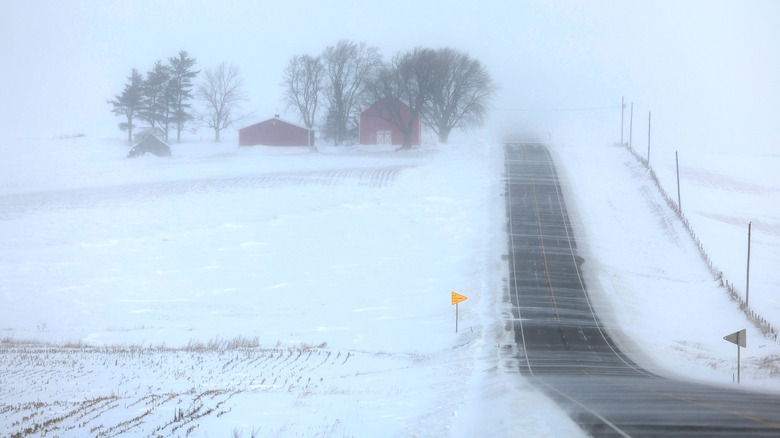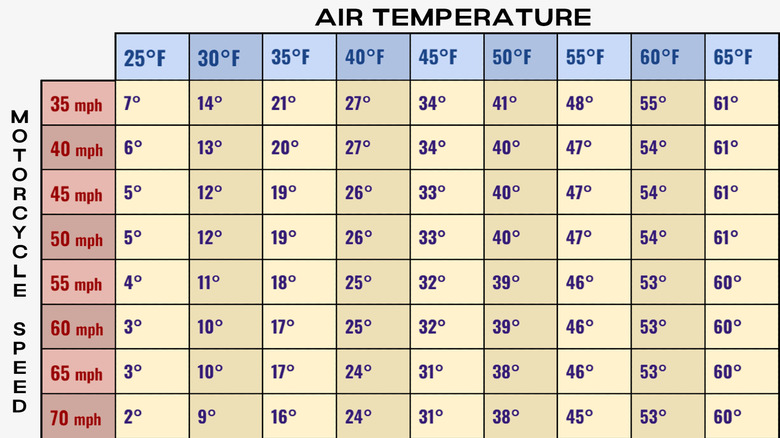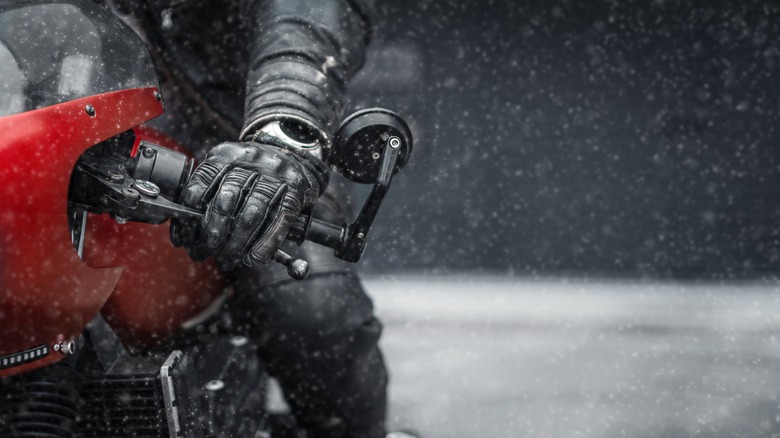Understand How Wind Chill May Affect Your Next Motorcycle Ride With This Handy Chart
Have you ever gone out for a ride on a motorcycle on a relatively warm day, clad only in a t-shirt and shorts? You might find that, even if it's a fairly mild day out, things suddenly take a turn for the chilly once you get up to speed on your bike. This is a result of the phenomenon known as wind chill, which is when the heat in your body is carried away by wind. When there's a powerful wind blowing past your exposed skin, you swiftly lose your body's ambient heat, almost like paint peeling off a wall splashed with water.
In addition to being a generally unpleasant phenomenon to experience, exposure to wind chill can be hazardous to your health while out on the road on a motorcycle. If the wind chill is severe enough to draw out the majority of your body's heat, you could develop hypothermia. This is why, when the cold season starts to manifest, it's very important that you know exactly how cold things are going to get before you take a motorcycle ride, not just from the regular weather report on your phone but from how fast you're planning on going. Neglecting weather conditions is a major misstep for any rider. Thankfully, there are resources available to aid in this pursuit.
Driving faster on a colder day hits you with a fiercer wind chill
In general, the faster you drive on a motorcycle on a colder day, the more severe the wind chill you experience will be. Of course, everyone has slightly different levels of tolerance for the cold, so unless you've got some hard numbers, it can be tricky to know what to expect. It's for this reason that the National Oceanic and Atmospheric Administration has created a helpful calculator to determine wind chill based on ambient temperature in either Fahrenheit or Celsius and how fast you'll be going in either miles per hour or knots.
From this calculator, we've created a simple chart, which you can see above. Based on this chart, you can get an idea of how much the wind chill will drive down your local temperature based on the local atmospheric conditions and your speed. For example, if it's relatively mild out, say around 65 degrees Fahrenheit, then the wind chill won't have a lot of variance whether you're cruising at 35 MPH or rocketing at 70 MPH, bringing things down by around 5 degrees. On the other hand, if it's already quite cold out, around 35 degrees Fahrenheit, then even a bit of extra speed can cause an exponential loss of heat to wind chill, around nearly 15 degrees down at just 35 MPH.
Consider not riding a motorcycle when it's below freezing out
As a wise man once said, the best way to win a fight is not to be there, and the same goes for battling against wind chill. As we said, different riders have different preferences when it comes to the cold, but generally speaking, if the temperature outside is already below freezing, i.e. less than 32 degrees Fahrenheit, it is definitely not a good idea to be riding a motorcycle. Based on the NOAA's calculator, if you were to hit the highway at 32 degrees Fahrenheit, driving at 60 MPH, you're looking at a wind chill of 13 degrees Fahrenheit. That's like the absolute worst of winter, blasting right into your face. That is no condition to be driving a motorcycle, and if it's already that cold out, your bike should probably be in storage anyway.
If it's not below freezing out, then you may be able to withstand the wind chill and still manage a safe motorcycle ride, provided there's no ice on the road. The most important thing is to dress properly for the season with clothes that are wind-resistant without constricting your movements. A softshell jacket will protect the core of your body, while gloves and pants with adjustable, sealable cuffs will prevent the wind from snaking its way onto your skin and siphoning out your heat.


